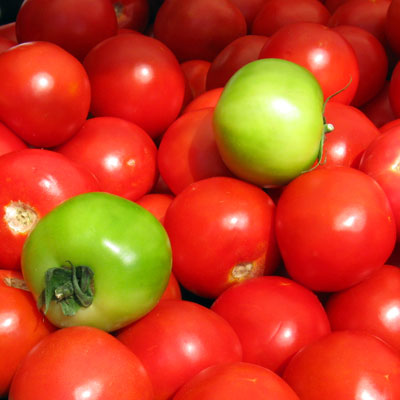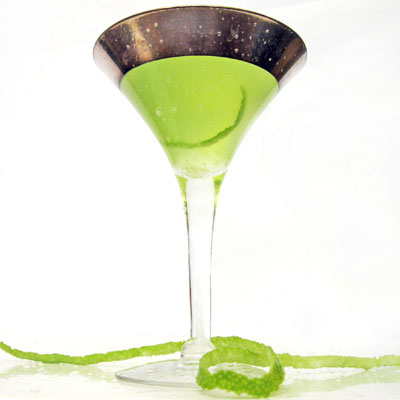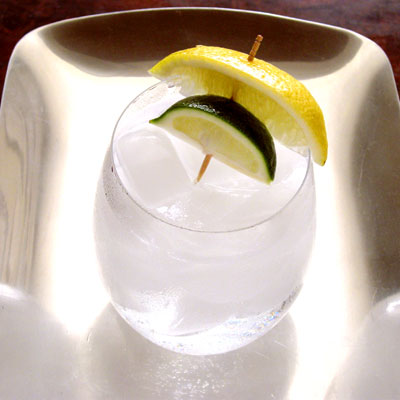
Gin is the most subtle and sophisticated of all the spirits. It is also under-appreciated, or down right loathed by way too many people.
But as America begins to expand its palate, gin is making a comeback. Because more and more people like you and me are broadening our perspectives. Loving great food is often the first step.
Because as you train your palate to appreciate subtlety in foods, it only makes sense that what you have learned will show itself in other areas and with other tastes.
What you will notice is that gin has a taste. It’s subtle and citrusy with that unmistakable back note of juniper
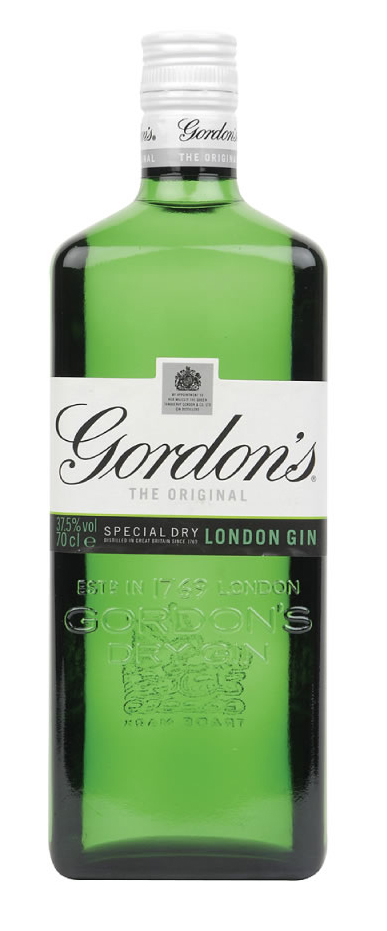 That’s because gin is a grain spirit with juniper berries and other botanicals (herbs and spices). This combination of flavors gives gin a strong and well-defined full-flavor. Which makes it a great choice in cocktails. It keeps its character better than almost any other spirit, no matter how or with what it is mixed.
That’s because gin is a grain spirit with juniper berries and other botanicals (herbs and spices). This combination of flavors gives gin a strong and well-defined full-flavor. Which makes it a great choice in cocktails. It keeps its character better than almost any other spirit, no matter how or with what it is mixed.
There are some classic partners for gin. These include: citrus (orange, lemon and lime), soda, and even cola (in many Latin countries). But its most famous partner is of course tonic. Giving us that perfect summer mixed drink, Gin and Tonic. Or more lovingly referred to as a G&T amongst my friends.
The gin industry is extremely well-organized. So there are standards out there for identifying a good and proper gin.
Most importantly gin must be dry.
It is usually colorless. But there are some gins that have the faintest of golden hues. This is often the result of wood aging. But saffron is sometimes added and can also account for the color.
The aroma is extremely important. Good gin has a complex array of botanicals (juniper, ginger, nutmeg, and citrus). The aroma is traditionally considered to be earthy but some newer styles have a decidedly spicy fragrance.
The flavor of gin should be fresh and bright. Never sweet or cloying. The flavors should sit on your tongue for quite a while after sipping.
The name gin is an English bastardization of the Dutch word for juniper, genever. Which itself has its roots in the French word for the very same berry, genievre.
Gin probably originated in the low-countries (Holland and Flanders) in the 17th century from the practice of distilling wine and grain.
During England’s involvement in the war to help establish the Netherlands independence from Spain (Eighty Years War, 1568–1648) it is thought that English soldiers developed a taste for the stuff and brought it home to England.
It may have gotten a slow start in England, but it was another international squabble that helped establish gin as a bonafied bit of British iconography.
In 1689 Dutch born Prince William and his British wife Mary were co-rulers of England. His war with Louis XIV of France made the importation of brandy illegal. The result was an explosion in gin drinking all over Great Britain. By 1733 the British were drinking 14 gallons (53 liters) of gin per person annually.
Naturally some shoddy (literally poison) stuff began to infiltrate the market. So between the 18th and 19th centuries the British government began regulating gin production. The result was a higher quality product at a considerably higher price. With profit to be made brands like Gordon’s, Tanquerey, Gilbey and Beefeater all got their start about this time.
The British brought the drink to its colonies. It became established in America, Spain, the Philippines and of course India.
In fact the classic pairing of gin and tonic probably began in India as a daily dose of quinine in tonic was often used to ward off malaria.
The 1920s increased the glamour of gin in the United States. Prohibition (1920–1933) all but assured that the chicest of people took up drinking in a big way. Gin became the drink of choice. It was cheap to produce and easy to get into the hands of the demanding public quickly, because it required no aging.
There are several distinct styles of gin. Most of the world’s gin is made in the London Dry Style. It can be categorized as dry, clean and fresh. But there are some slight variations on the London Dry Style. Plymouth gin is an example that tends to be sweeter and more aromatic.
Then there is Holland’s version, still called genever and is further sub-categorized as the sweet and very botanical, Oude. The drier more modern styled, Jonge. And Korenwijn, which is cask aged, extremely malty and full-bodied.
There are many, many brands of gin. Each, as you might suspect are slightly different and lend them selves to one or another cocktail. But of course this is just opinion and is not meant to define gin or its various preparations.
Gordon’s is distilled 3 times. In my opinion it makes the perfect gin and tonic. It is fresh and aromatic, crystal clear with a very defined citrus flavor. But I also like Plymouth Gin for its spicy, full-flavor which also pairs well with tonic. As does Bombay Dry.
However, the trendier Bombay Sapphire is too complex for a classic G&T and if ever there were such a thing as a gin sipper I think Sapphire would have to be considered in that role.
The perfect martini gin is a bit more complicated. Maybe a subject for a separate post. But if you ever see Polo Club gin try that in a martini, as well as Tanquerey, Citadelle, Boodles, and if you are feeling adventurous Hendrik’s.
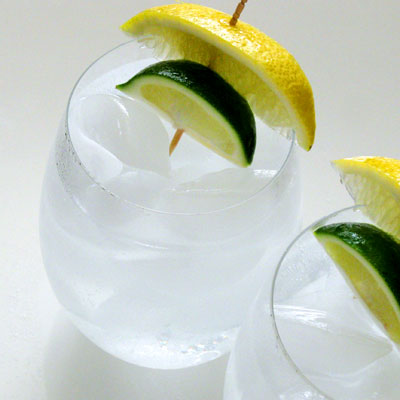 But today we are concentrating on the British quintessential summertime cocktail. A Gin and Tonic.
But today we are concentrating on the British quintessential summertime cocktail. A Gin and Tonic.
Makes 1
2 ounces appropriate gin
4 ounces chilled tonic water
lemon or lime wedges
Fill an old-fashioned glass with whole ice cubes. Pour the gin over the ice. Add enough tonic to fill the glass. Stir well. Squeeze the lemon or lime wedges into the glass and drop them into the drink. Serve.
SERIOUS FUN FOOD
Greg Henry
SippitySup

